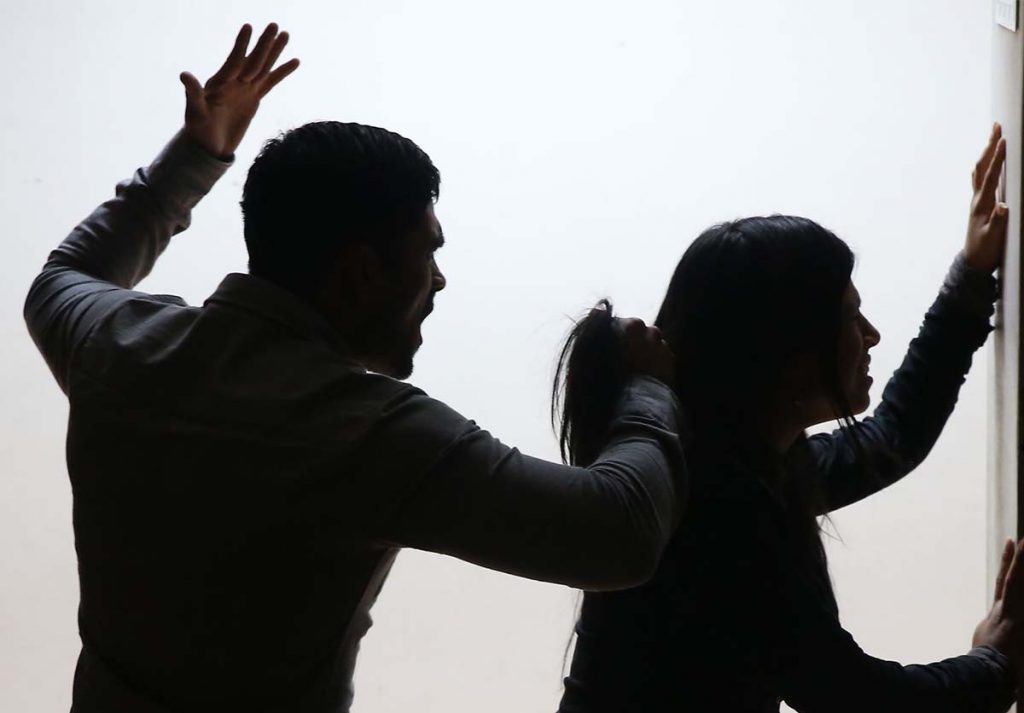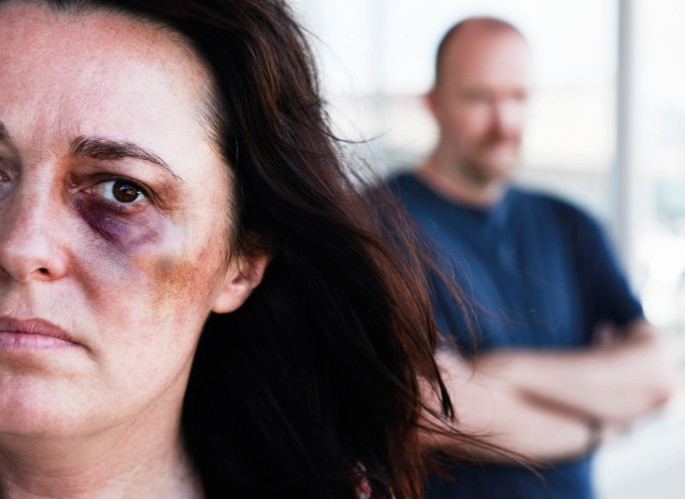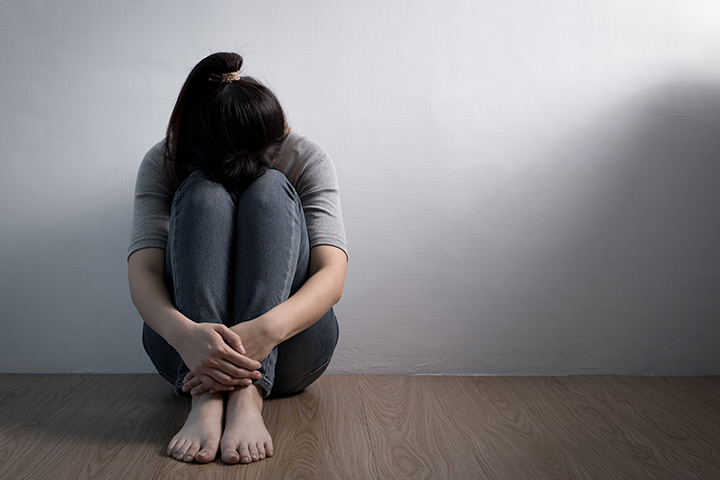What is Domestic Violence?
Domestic violence is also called “domestic abuse” or “intimate partner violence (IPV).” It is any behavior pattern in a relationship used to gain power and control over an intimate partner. Also, it is usually seen as a pattern of being abusive to a close friend or family member. Often, it occurs when the abuser exerts power and control over the victim.

Hence, it includes any behavior that frightens, intimidates, manipulates, hurts, or humiliates a partner. Anyone can be a victim of domestic violence. Regardless of age, background, level of education, race, gender, sexual orientation, or religion. Although it usually occurs within a range of relationships. Sometimes, victims of domestic abuse may also include a child or any other household member.
However, domestic abuse can be mental, physical, economic, or sexual.
History of Domestic Violence/ IPV
The history of IPV is complex because it is not as concrete as American history. However, the development and progression of IPV in society can be traced through legal landmarks and movements. An example is the Battered Women’s Movement.
The social acceptance of wife-beating can be traced back to 753BC; under the rule of Romulus. The Laws of Chastisement deemed wife-beating legal. So long as the rod used to discipline was not bigger than the girth of the man’s right thumb. This was known as “The Rule of Thumb.” Also, the 14th Century Roman Catholic Church encouraged husbands to beat their wives. This is out of concern for their spiritual well-being.
In 1871, Alabama and Massachusetts made wife beating illegal. Later on, wife-beating became a relevant topic of discussion in America.
Initially, legal development against domestic violence was slow. However, this was due to the indecisiveness of the legal system towards such cases. Fortunately, many states including New York have strengthened legislation pertaining to domestic violence.

Types of Domestic Abuse
The following are the major and prevalent types of domestic abuse;
#1. Emotional/Psychological Abuse:
This includes undermining a person’s sense of self-worth through constant criticism. Also, damaging a partner’s relationship with the children or not letting a partner see friends and family. You may be in an emotionally abusive relationship if your partner insults you or continually criticizes you. Also, causing fear by intimidation, threatening physical harm to self, partner or children. The worst of all is when your partner plays mind games.
In this case, you are being used or manipulated to your partner’s benefit but to your damage. In my experience, my ex made me do things that affected my education, as well as my relationship with loved ones. If I did anything outside what he told me to do, he’d cheat on me with his own ex. Then, I felt like the cause of his cheating and being a jerk. So, I’ll try to adjust so he wouldn’t cheat on me. But I felt stuck in the relationship. Eventually, he called it off. It felt like a weight rolled off my shoulders, but I was also heartbroken. That was when I realized how bad life had turned out. Well, of course, I bounced back.
Read Also: SIGNS OF EMOTIONAL ABUSE: What are the Warning Signs from Children, Relationships & Marriages
#2. Financial or Economic Abuse:
This involves making a person financially dependent. Here, the abuser maintains total control over financial resources. Also, the abuser withholds access to money, and/or forbids education or employment.
#3. Physical Abuse:
This involves hurting or trying to hurt a partner by hitting, kicking, burning, grabbing, and pinching. Also, denying medical care, forcing alcohol or drug use, is physical abuse. Lastly, using physical force in sexual activities is included.

#4. Sexual Abuse:
Generally, this involves forcing a partner to take part in a sex act when the partner does not consent. You may be in a sexually abusive relationship if your partner:
- Accuses you of cheating or is often jealous.
- Makes you dress in a sexual way.
- Insults you in sexual ways or calls you sexual names.
- Has ever forced or manipulated you into having sex or performing sexual acts.
- Often holds you down during sex.
- Often sex when you are sick, tired or after beating you.
- Hurts you with weapons or objects during sex.
- Involves other people in sexual activities with you.
- Ignores your feelings regarding sex.
#5. Stalking:
This involves any pattern of behavior that intends to harass, annoy, or terrorize the victim. Basically, stalking includes repeated telephone calls, unwelcome letters, or gifts by mail. Also, it involves surveillance at work and places that the victim is known to frequent. Eventually, stalking escalates to rape, murder, or something harmful to the victim.
Domestic Violence Statistics
Generally, the statistics on those who are affected by IPV are alarming. Domestic abuse affects 3%-5% of current adult relationships in the United States. It affects more than 2 million women. Also, men can be victims of IPV. About 800,000 men are also victims of IPV. Generally, one-third of women are the victims of IPV, at least once in their lifetime.
Furthermore, about 25% of LGBT individuals are victims of intimate partner abuse, just as often as are heterosexual women. About 1,300 deaths were attributed to domestic abuse as of 2003. Also, research into deaths that result from intimate partner abuse in the United States and Austria indicates that more than 50% of women. They were murdered as a result of domestic abuse, mostly through gunshots. About 4%-9% of men are killed as victims of domestic violence. In addition, 65% of the approximate 1,300 murder-suicides that occur in the United States every year involve intimate partners.
Surprisingly, teen intimate partner abuse takes place at high rates. About 12% of adolescents in grades 7-12 have been victims of physical dating violence. Also, 20% of youths have suffered from psychological dating violence. This abuse also puts victims in danger of practicing risky sexual behavior, unhealthy eating, drug use, and suicidal behaviors. Other complications can include physical injury and death. Eventually, these victims also become sufferers of IPV as adults.
Signs of Domestic Abuse
You’re going through domestic abuse if your partner:
- Embarrasses or makes fun of you in front of your friends or family.
- Put down your accomplishments.
- Makes you feel like you will be unable to survive without them
- Uses intimidation or threats to gain compliance.
- Treats you roughly—grab, push, pinch, shove or hit you.
- Uses drugs or alcohol as an excuse for saying hurtful things or abusing you.
- Blames you for how they feel or act.
- Pressures you sexually for things you aren’t ready for.
- Makes you feel like there is no way out of the relationship.
- Prevents you from doing things you want, like spending time with friends or family.
Signs you’re a Victim of Domestic Abuse
The following are tell-tale signs you are a victim of domestic abuse.
- Sometimes you feel scared of how your partner may behave.
- Constantly make excuses to other people for your partner’s behavior.
- Believe that you can help your partner change if only you changed something about yourself.
- Try not to do anything that would cause conflict or make your partner angry.
- Always do what your partner wants you to do instead of what you want.
- Stay with your partner because you are afraid of what your partner would do if you broke up.
- Constantly trying to cover black eyes and bruises.
- You don’t feel safe or secure in the relationship.
Effects of Domestic Abuse
Basically, domestic abuse has significant health and public health consequences. 25%-50% of families have lost their homes as a result of IPV. Furthermore, such victimization is also associated with nearly $6 billion in health care costs and lost work productivity per year. IPV sufferers are at a higher risk of facing discrimination. That is in terms of securing any form of insurance (health, life, disability, and property). Also, they are likely to experience trouble raising their children and suffer family disruption. Lastly, victims of IPV can develop depression, anxiety, and substance abuse disorders.
The abuse of pregnant women has been associated with preterm deliveries of low-birth-weight babies. Domestic partner abuse puts the children of the couple at risk for lower intellectual functioning. Also, they are at high risk of having abusive partners as adults. Additionally, this form of family violence puts children at higher risk of having emotional problems. Eventually, such children engage in drug abuse. Lastly, the death of the victim in most cases is inevitable.
Causes of Domestic Abuse
- Using violence and abuse tactics worked to solve problems for them in the past.
- They have established tremendous control over others through abuse tactics.
- No one has stopped them or reported them to authorities.
Common triggers that set off an abuser:
- Disagreement with their intimate partner.
- Protracted periods of unemployment
- Financial issues
- Desperation
- Anger escalation
- Humiliation stemming from problems at work or other perceived failures.
- Jealousy and envy
Treatment and Prevention of Domestic Abuse
Domestic abuse can be treated and prevented by:
- Establishing and maintaining the safety of the victim.
- Providing appropriate legal consequences to the batterer
- Addressing the emotional impact on the victim. The problems of the abuser are to be addressed through therapy.
- Providing economic opportunity, mentors, role models, organized community programs for youths.
- Educational environment that emphasizes prevention of abusiveness in any relationship.
- Love and support from family members.
Get Help For Domestic Violence
To get help for domestic violence across the country;
#1. American Domestic Violence Crisis Line
3300 N.W. 185th Street, Suite 133
Portland, OR 97229
Phone: 503-846-8748
Toll-free: 1-866-USWOMEN (International Crisis Line).
The American Domestic Violence Crisis Line provides safety planning and support services. It focuses on American women living overseas, who are victims of domestic violence.
#2. Communities United Against Violence
160 14th Street
San Francisco, CA 94103
Phone: 415-777-5500
Support Line: 415-333-HELP
http://www.cuav.org
They offer crisis intervention, counseling, advocacy, and support for gay men and lesbians in abusive relationships.
#3. House of Ruth
5 Thomas Circle, N.W.
Washington, D.C. 20005
202-667-7001
http://www.houseofruth.org
#4. Maitri
234 East Gish Road #200
San Jose, CA 95112
Phone: 408-436-8393
Toll-free hotline: 1-888-8-MAITRI
http://www.maitri.org
Maitri helps South Asian women with domestic violence, emotional abuse, and family conflict.
#5. National Domestic Violence Hotline
1-800-799-7233 (1-800-799-SAFE)
1-800-787-3224
http://www.ndvh.org
The 24-hour, toll-free hotline provides crisis intervention, referrals to battered women’s shelters, programs, and agencies. Also, they refer legal programs, and other groups and organizations willing to help. Lastly, they provide resources for battered women and their families.
#6. The Network La Red
P.O. Box 6011
Boston, MA 02114
Phone: 617-695-0877
Hotline: 617-423-7233
The Network La Red offers bilingual (English and Spanish) information and resources for lesbian and bisexual women in violent relationships.
#7. Reconstructive Surgery/Domestic Abuse Line
Toll-free: 1-800-842-4546
They provide free reconstructive surgery, for male and female victims of domestic violence.
#8. Safe Horizon
800-621-HOPE (4673)
http://www.safehorizon.org
They Provide case management, individual counseling, and support groups for domestic violence victims.
#9. Violence Project
PMB 131
955 Mass Avenue
Cambridge, MA 02139
Phone: 617-354-6056
Toll-free Crisis Line: 1-800-832-1901
http://www.gmdvp.org
Violence Project offers information and resources for gay men in violent relationships.
What does abuse do to a woman?
Abuse of any kind, whether verbal or physical, can lead to many long-term health issues, some of which are cardiovascular, digestive, and hypertensive conditions. Abused women are more likely to develop mental health issues such as depression, anxiety, and eating disorders. Abused women may turn to substance abuse or alcoholism to cope with the trauma they have experienced.
Which type of abuse is the hardest to detect?
Emotional abuse is the most difficult form of abuse to recognize, and it frequently occurs in conjunction with other types of abuse. Many of its possible repercussions, such as difficulties in learning and speech as well as delays in the child’s physical development, can also occur in children who are not being subjected to any form of emotional abuse.
What is the behavior of an abuser?
The perpetrator of domestic violence will frequently deny or downplay the seriousness of the violence, as well as its impact on the victim and other members of the family. The abuser reduces the victim to the status of an object and frequently views them as their property or as sexual objects. A person who abuses others has low self-esteem and a sense that they have no power or influence in the world.
Conclusion
In conclusion, improving the effectiveness of the victim’s treatment is essential. Furthermore, the legal protection of victims should be strengthened. There should be accountability to ensure treatment for abusers. Finally, domestic abuse faced by individuals who are in LGBT relationships should be taken seriously. No one deserves to go through abuse of any kind. Therefore, our ability to rid society of this menace will make it a better and safer place for all.
Domestic Violence FAQs
History of Domestic Violence?
The social acceptance of wife-beating can be traced back to 753BC; under the rule of Romulus.
What is domestic violence?
Domestic violence is any pattern of behavior in a relationship that is used to gain or maintain power and control over an intimate partner.
What is the most common domestic violence?
Emotional Abuse: Emotional abuse usually starts with a verbal assault. Abusers utilize it as a means of humiliating and belittling their victims. Their intention is to make their companion feel insignificant.
Why is domestic violence a big issue?
Domestic violence is a major issue all around the world. It infringes on women’s fundamental human rights and frequently leads in significant damage or death. While numbers vary slightly, women are the victims of domestic abuse in around 95 percent of incidents.



